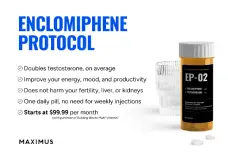You should upgrade or use an alternative browser.
PSA at 5.3
- Thread starter ocman
- Start date
-
- Tags
- prostate biopsy
I got the results back from the MRI and the score is PI-RADS 4/5, one question I didn't ask was the size of the suspicious area. They recommended that I get a Fusion Biopsy.
Here's the test results:
Study Result
Impression
IMPRESSION:
1. Focal findings suspicious for neoplasia, PI-RADS 4 lesion in the right posterior lateral peripheral mid gland.
2. Capsular margin: intact -unlikely extracapsular extension.
Overall PI-RADS Category: 4/5
Standardized reporting guidelines follow recommendations by ACR-ESUR PI-RADS v2.1
I, David Lu, M.D., have reviewed this radiological study personally and I am in full agreement with the findings of the report presented here.
Appendix (based on UCLA data/publications)
Overall MRI sensitivity for prostate cancer detection = 47%
Sensitivity for tumors > 1 cm or for Gleason > 3 + 4 = 72%
Biopsy yield for prostate cancer based on overall level of suspicion:
3/5 = 16 - 24%
4/5 = 37 - 78%
5/5 = 80 - 96%
1. Eur Urol 2019;75(5):712-720
2. Radiology 2017;283(1):130-139
3. Cancer 2016;122(6):884-892
4. Abdom Radiol 2016;41:954-962
5. Eur Urol 2015;67(3):569-576
6. Am J Roentgenol 2015;1:W87-92
Dictated by: Eric Rupe 8/16/2019 2:58 PM
Signed by: David Lu 8/16/2019 8:41 PM
Narrative
3T MRI OF THE PROSTATE WITH AND WITHOUT CONTRAST and with 3D post-processing
CLINICAL HISTORY: Elevated PSA
PSA 4.8 ng/mL 7/25/2019
COMPARISON: None.
TECHNIQUE: MRI of the pelvis was performed on a 3 Tesla Siemens Skyra scanner. A transabdominal phased array was used. Small field of view sagittal, axial oblique and coronal oblique T2W TSE high resolution images and diffusion weighted images with
apparent diffusion coefficient map were obtained. Pre- and post-contrast axial dynamic view-sharing time-resolved gradient recalled echo T1-weighted images are acquired with intravenous administration of gadolinium contrast. Offline post-processing on a
dedicated InVivo DynaCAD 3 workstation was performed for generation of time-intensity curves and pharmacokinetic maps and 3D contouring of the prostate gland and any target lesions using combined automated and manual segmentation techniques.
CONTRAST: gadobutrol (Gadavist) 1 mmol/mL inj 10 mL.
GLUCAGON: No
FINDINGS:
Quality: Excellent
The prostate measures 31 g based on contour, (4.0 cm x 3.8 cm x 4.4 cm).
PSA Density0.15 ng/mL/cc
The background transition zone is heterogeneous. The background peripheral zone is heterogeneous.
The following appears suspicious (>= PI-RADS 3):
Target #1 / ROI #14 (3D T2 slice #30)
Location: right posterolateral peripheral midgland
Clock-face axial location: 8 o'clock
Cranio-caudal location: 15% of distance from apex to base
Longest diameter: 0.7 cm
Capsular involvement: may abut the capsule
T2 signal: round circumscribed moderately T2 hypointense, 4/5 suspicion
Diffusion-weighted imaging: focal moderately hyperintense high B-value DWI and moderately hypointense ADC, 1169 square microns/second, 3/5 suspicion
Dynamic contrast-enhanced perfusion: early intense with mild early washout (< 20% by 40 seconds) positive
Enhancement kinetics: Ktrans 0.37, Kep 3.53, iAUC 5.44
Suspicion for extracapsular extension: 2 (1 = very low suspicion, 2 = unlikely, 3 = intermediate suspicion, 4 = likely, 5 = definite)
Suspicion for neurovascular bundle involvement: 1 (1 = none, 2 = possible, 3 = highly likely)
Suspicion for seminal vesicle invasion: 1 (1 = very low suspicion, 2 = unlikely, 3 = intermediate suspicion, 4 = likely, 5 = definite)
Overall PI-RADSv2.1 Score: 4/5 (1=very low suspicion, 5=very highly suspicious).
Overall UCLA Score: 4/5 (1 = very low suspicion, 5 = very highly suspicious).
Limited views of the pelvis reveal no enlarged lymph nodes. Small volume free fluid in the pelvis.
Component Results
There is no component information for this result.
Deleted member 16042
Member
These findings are VERY promising:
Suspicion for extracapsular extension: 2 (1 = very low suspicion, 2 = unlikely, 3 = intermediate suspicion, 4 = likely, 5 = definite)
Suspicion for neurovascular bundle involvement: 1 (1 = none, 2 = possible, 3 = highly likely)
Suspicion for seminal vesicle invasion: 1 (1 = very low suspicion, 2 = unlikely, 3 = intermediate suspicion, 4 = likely, 5 = definite)
Withe the major size at 0.7cm, you may receive a recommendation for biopsy or active surveillance, and if biopsied, if you are Gleason 3+3, you may have the active surveillance option. If Gleason score is higher next consideration for me would be what focal treatment to choose. I would want that tissue ablated being close to capsule margin.
You may reach different decisions.
I was told they need to do a biopsy to get a Gleason score.I would really want to know Gleason score for that tissue.
Guided is harder to find covered by insurance. My own preference would be to pay out of pocket for guided out of state by a Dr with a ton of expertise and experience. I already know several options high on my list, Dr Joe Busch would be first choice, but he is in transition to a new practice and his pricing went through the roof with this change, so other options are Karamanian, Walser, Desert imaging in S. CAL or another Cal Radnet operation, or possibly Sperling. But this deserves research on your part to make your own decisions. I have not by any means researched all available.
These findings are VERY promising:
Suspicion for extracapsular extension: 2 (1 = very low suspicion, 2 = unlikely, 3 = intermediate suspicion, 4 = likely, 5 = definite)
Suspicion for neurovascular bundle involvement: 1 (1 = none, 2 = possible, 3 = highly likely)
Suspicion for seminal vesicle invasion: 1 (1 = very low suspicion, 2 = unlikely, 3 = intermediate suspicion, 4 = likely, 5 = definite)
Withe the major size at 0.7cm, you may receive a recommendation for biopsy or active surveillance, and if biopsied, if you are Gleason 3+3, you may have the active surveillance option. If Gleason score is higher next consideration for me would be what focal treatment to choose. I would want that tissue ablated being close to capsule margin.
You may reach different decisions.[/QUOTE]
Deleted member 16042
Member
I hope you understand the type of biopsy I am referring to. t would be ludicrous to have a TRUS 12 needle biopsy with that MRI result. Targeted biopsy would be appropriate to sample that questionable lesion.
You may however get other recommendations to watch and wait: active surveillance.
Edit: BTW, UCLA is pretty cutting edge as an organization regarding prostate diagnosis and treatment these days. They even have been doing clinical trials for PSMA based PET scans that offer more comprehensive and accurate PCa imaging than just 3T MP MRI. PSMA is produced only in prostate cancer cells and contrast agents that illuminate PSMA can be imaged anywhere in the body, so not only do you get definitive info that what is imaged is cancer or not, it is specifically prostate cancer, and metastases can also be seen elsewhere in the body. Seems to me once clinical trials are done PSMA scanning will be the future golden standard. Seems it is a standard of care in parts of Europe now. (Edit: I just read an interview about some of the drawbacks of PSMA imaging... not a magic bullet for initial diagnosis, but further development may improve its role).
If I was covered under insurance in CA, I'd try to seek a Doc I felt compatible with at UCLA or UCSF or Stanford, but still push for the most accurate targeted biopsy they would agree to. YMMV
Yes, I will be getting an MRI/Ultrasound Fusion Biopsy, from Dr. Leonard Mark's at UCLA.I hope you understand the type of biopsy I am referring to.
MRI/Ultrasound Fusion Biopsy
I have not been where you are at BUT I would HIGHLY SUGGUEST that you go to Inspire and sign up for the PCa group (If you have not done that already). There are a LOT of guys that have been where you are at now and a LOT of experience from a LOT of guys that are in the same boat. The members their will be happy to answer any questions you have and most likely can give feedback on your procedure and the DR doing it. There is a LOT knowledge there to help you understand where you are now going.UPDATE: 8-22-19, @Orrin Israel what do you think?
I got the results back from the MRI and the score is PI-RADS 4/5, one question I didn't ask was the size of the suspicious area. They recommended that I get a Fusion Biopsy.
Here's the test results:
Study Result
Impression
IMPRESSION:
1. Focal findings suspicious for neoplasia, PI-RADS 4 lesion in the right posterior lateral peripheral mid gland.
2. Capsular margin: intact -unlikely extracapsular extension.
Overall PI-RADS Category: 4/5
Standardized reporting guidelines follow recommendations by ACR-ESUR PI-RADS v2.1
I, David Lu, M.D., have reviewed this radiological study personally and I am in full agreement with the findings of the report presented here.
Appendix (based on UCLA data/publications)
Overall MRI sensitivity for prostate cancer detection = 47%
Sensitivity for tumors > 1 cm or for Gleason > 3 + 4 = 72%
Biopsy yield for prostate cancer based on overall level of suspicion:
3/5 = 16 - 24%
4/5 = 37 - 78%
5/5 = 80 - 96%
1. Eur Urol 2019;75(5):712-720
2. Radiology 2017;283(1):130-139
3. Cancer 2016;122(6):884-892
4. Abdom Radiol 2016;41:954-962
5. Eur Urol 2015;67(3):569-576
6. Am J Roentgenol 2015;1:W87-92
Dictated by: Eric Rupe 8/16/2019 2:58 PM
Signed by: David Lu 8/16/2019 8:41 PM
Narrative
3T MRI OF THE PROSTATE WITH AND WITHOUT CONTRAST and with 3D post-processing
CLINICAL HISTORY: Elevated PSA
PSA 4.8 ng/mL 7/25/2019
COMPARISON: None.
TECHNIQUE: MRI of the pelvis was performed on a 3 Tesla Siemens Skyra scanner. A transabdominal phased array was used. Small field of view sagittal, axial oblique and coronal oblique T2W TSE high resolution images and diffusion weighted images with
apparent diffusion coefficient map were obtained. Pre- and post-contrast axial dynamic view-sharing time-resolved gradient recalled echo T1-weighted images are acquired with intravenous administration of gadolinium contrast. Offline post-processing on a
dedicated InVivo DynaCAD 3 workstation was performed for generation of time-intensity curves and pharmacokinetic maps and 3D contouring of the prostate gland and any target lesions using combined automated and manual segmentation techniques.
CONTRAST: gadobutrol (Gadavist) 1 mmol/mL inj 10 mL.
GLUCAGON: No
FINDINGS:
Quality: Excellent
The prostate measures 31 g based on contour, (4.0 cm x 3.8 cm x 4.4 cm).
PSA Density0.15 ng/mL/cc
The background transition zone is heterogeneous. The background peripheral zone is heterogeneous.
The following appears suspicious (>= PI-RADS 3):
Target #1 / ROI #14 (3D T2 slice #30)
Location: right posterolateral peripheral midgland
Clock-face axial location: 8 o'clock
Cranio-caudal location: 15% of distance from apex to base
Longest diameter: 0.7 cm
Capsular involvement: may abut the capsule
T2 signal: round circumscribed moderately T2 hypointense, 4/5 suspicion
Diffusion-weighted imaging: focal moderately hyperintense high B-value DWI and moderately hypointense ADC, 1169 square microns/second, 3/5 suspicion
Dynamic contrast-enhanced perfusion: early intense with mild early washout (< 20% by 40 seconds) positive
Enhancement kinetics: Ktrans 0.37, Kep 3.53, iAUC 5.44
Suspicion for extracapsular extension: 2 (1 = very low suspicion, 2 = unlikely, 3 = intermediate suspicion, 4 = likely, 5 = definite)
Suspicion for neurovascular bundle involvement: 1 (1 = none, 2 = possible, 3 = highly likely)
Suspicion for seminal vesicle invasion: 1 (1 = very low suspicion, 2 = unlikely, 3 = intermediate suspicion, 4 = likely, 5 = definite)
Overall PI-RADSv2.1 Score: 4/5 (1=very low suspicion, 5=very highly suspicious).
Overall UCLA Score: 4/5 (1 = very low suspicion, 5 = very highly suspicious).
Limited views of the pelvis reveal no enlarged lymph nodes. Small volume free fluid in the pelvis.
Component Results
There is no component information for this result.
BTW Blackhawk has been doing quite a bit of homework on this very subject and it shows.
Us TOO Prostate Cancer - Inspire
Yes, it does, and much appreciated!BTW Blackhawk has been doing quite a bit of homework on this very subject and it shows.
Us TOO Prostate Cancer - Inspire
Deleted member 16042
Member
Yes, I will be getting an MRI/Ultrasound Fusion Biopsy, from Dr. Leonard Mark's at UCLA.
MRI/Ultrasound Fusion Biopsy
Good plan!
Here is a thread with some basic info:
My experiment with IP6 (Iron chelator)
I had been doing a test run on some home brew that mixed up and have not followed up with it. Long story but I am thinking of starting back on another test run. May try my own capping it up.
CK out the thread on it at Inspire.
hCG Mixing Calculator
HCG Mixing Protocol Calculator
Similar threads
- Replies
- 4
- Views
- 2K
- Replies
- 19
- Views
- 5K
- Replies
- 1
- Views
- 411
TRT Hormone Predictor
Predict estradiol, DHT, and free testosterone levels based on total testosterone
⚠️ Medical Disclaimer
This tool provides predictions based on statistical models and should NOT replace professional medical advice. Always consult with your healthcare provider before making any changes to your TRT protocol.
ℹ️ Input Parameters
Predicted Hormone Levels
Enter your total testosterone value to see predictions
Results will appear here after calculation
Understanding Your Hormones
Estradiol (E2)
A form of estrogen produced from testosterone. Important for bone health, mood, and libido. Too high can cause side effects; too low can affect well-being.
DHT
Dihydrotestosterone is a potent androgen derived from testosterone. Affects hair growth, prostate health, and masculinization effects.
Free Testosterone
The biologically active form of testosterone not bound to proteins. Directly available for cellular uptake and biological effects.
Scientific Reference
Lakshman KM, Kaplan B, Travison TG, Basaria S, Knapp PE, Singh AB, LaValley MP, Mazer NA, Bhasin S. The effects of injected testosterone dose and age on the conversion of testosterone to estradiol and dihydrotestosterone in young and older men. J Clin Endocrinol Metab. 2010 Aug;95(8):3955-64.
DOI: 10.1210/jc.2010-0102 | PMID: 20534765 | PMCID: PMC2913038
Online statistics
- Members online
- 1
- Guests online
- 166
- Total visitors
- 167












